You can add authentic smoky flavors to outdoor cooking without a traditional smoker in five easy ways. Use smoke-infused wood planks like cedar or maple for grilling, or try liquid smoke in your solar cooker for instant smokiness. Create your own smoked salt by cold smoking coarse salt, or infuse natural wood chips through boiling and toasting for enhanced flavor profiles. For a quick solution, blend smoky spices using Spanish paprika as your base with complementary herbs and seasonings. These simple techniques will transform your outdoor cooking from basic to boldly flavorful, with plenty of creative possibilities to explore.
Using Smoke-Infused Wood Planks
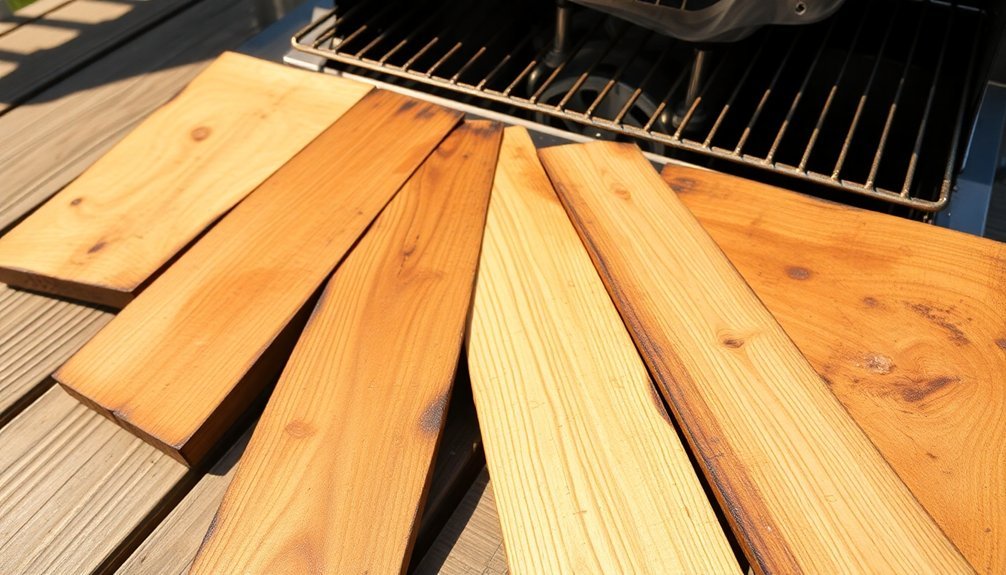
When you're ready to elevate your outdoor cooking game, smoke-infused wood planks offer a time-tested method for adding rich, aromatic flavors to your grilled dishes.
Choose untreated cedar, maple, hickory, or alder planks, and soak them for at least an hour before use. Our premium planks come in packs of two for convenient portion control and better value.
To get started, preheat your plank 8-12 inches above the flame, flipping it occasionally until it flattens. For gas grills, maintain 400°F and use the warming rack; for charcoal, opt for indirect heating.
Once you've placed your food on the toasted side, close the lid and let the magic happen.
Keep a spray bottle handy for any flare-ups, and you'll be rewarded with delicately smoked meats, fish, and even vegetables.
This Native American-inspired technique doesn't just enhance flavor—it also makes cleanup a breeze.
Liquid Smoke Solar Applications
As solar cooking gains popularity among outdoor enthusiasts, liquid smoke offers a convenient way to infuse your sun-cooked dishes with authentic smoky flavors.
You'll find that just a few drops can replicate the taste of traditional wood-smoked foods without the need for actual smoke or fire. The condensed wood essence, derived from natural pyrolysis of materials like hardwood or coconut shells, provides concentrated smokiness that's perfect for solar ovens. Research shows that liquid smoke can enhance plant defenses and may offer similar protective benefits to your outdoor-grown herbs and vegetables.
When using liquid smoke in your solar cooker, start with small amounts since it's highly concentrated. You can brush it directly onto your food before placing it in the solar oven, or add it to marinades and sauces.
Remember that high-quality liquid smoke shouldn't contain tar residue, so look for filtered varieties that'll give you clean, pure smoky notes in your sun-cooked meals.
Smoked Salt Seasoning Methods
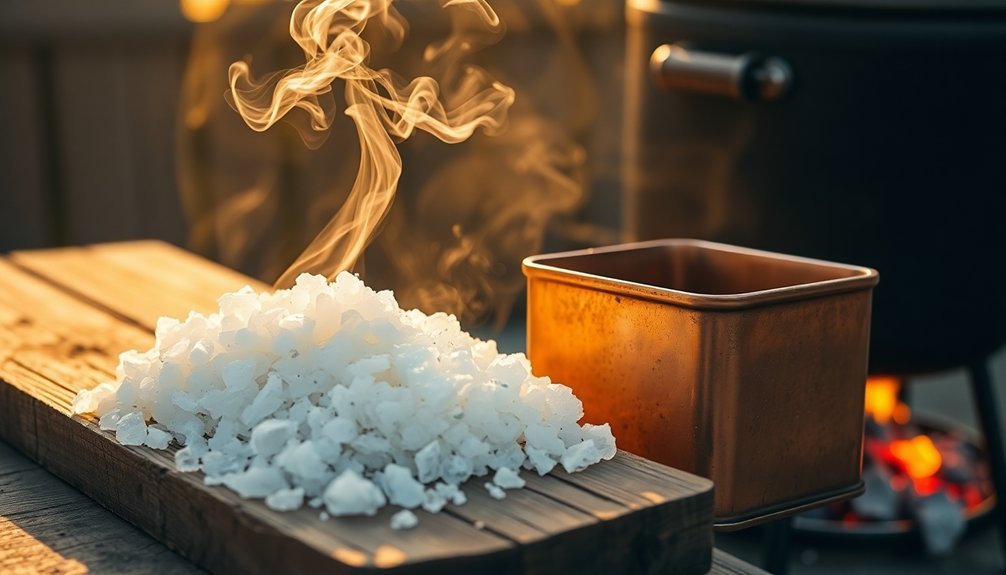
Three key steps transform ordinary salt into a flavor-packed smoked seasoning that'll elevate your outdoor cooking. Start by spreading coarse, non-iodized salt evenly in a rimmed pan and lightly mist it with water to enhance smoke absorption. Next, cold smoke your salt at temperatures below 80°F for 4-24 hours, stirring hourly for even exposure. Finally, store your creation in an airtight container. Adding a pan of water over the heat source helps maintain ideal moisture levels during smoking.
| Wood Type | Flavor Profile | Best Pairings |
|---|---|---|
| Hickory | Bold & Rich | Red Meats, Pork |
| Cherry | Sweet & Mild | Poultry, Fish |
| Alder | Delicate & Light | Seafood, Vegetables |
You'll know your salt is ready when it transforms from white to a golden brown. Use it as a finishing touch on steaks, grilled vegetables, or even chocolate desserts for an unexpected smoky kick.
Natural Wood Chip Infusion
Natural wood chip infusion offers five distinct methods to enhance your outdoor cooking with authentic smoky flavors.
You'll create deeper, more complex tastes by choosing the right wood type and preparation method. Oak delivers vanilla notes, while mesquite brings bold smokiness to your dishes.
- Boil your chips for 10-15 minutes to sanitize and expand the wood's structure.
- Toast pecan chips to intensify their nutty essence before use.
- Place wood chunks around your grill's perimeter for even smoke distribution.
- Add apple wood chips directly to coals when grilling chicken or fish.
- Control smoke intensity with a smoking gun for precise flavor infusion.
Remember to start with small amounts and let the flavors develop naturally.
Temperature plays an essential role – warmer conditions will speed up the infusion process, while longer aging allows flavors to meld beautifully.
Smoky Spice Blending Techniques
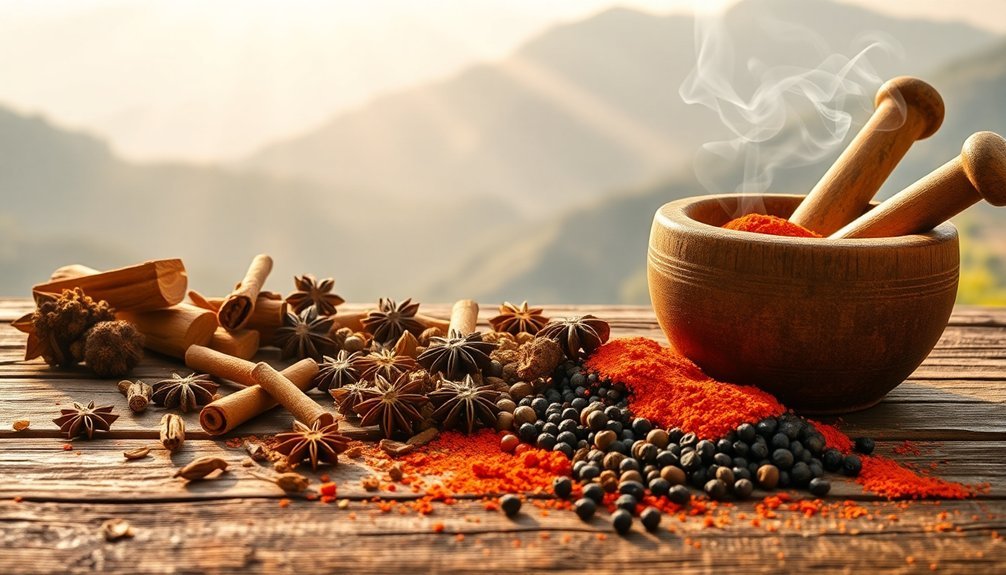
When creating smoky flavors outdoors, mastering spice blending techniques will transform your dishes from ordinary to extraordinary.
Start with a base of sweet and hot Spanish smoked paprika, then customize your blend by adding garlic and onion granules, along with herbs like oregano or thyme.
You'll want to adjust the heat level by varying the ratio of sweet to hot paprika, and you can deepen the smokiness by incorporating cumin or liquid smoke.
For BBQ-style dishes, mix your paprika blend with chili powder and red pepper flakes.
Don't forget to store your custom blend in an airtight container to maintain freshness for up to six months.
Try your blend on grilled meats, vegetables, or even in marinades – just remember to taste and adjust the seasonings as you cook.
Frequently Asked Questions
How Long Does Smoked Flavor Last When Storing Cooked Meats?
You'll find that smoked flavor can last 1-2 weeks in refrigerated meat and up to six months when frozen, but you'll get the best taste within the first few months of storage.
Can Weather Conditions Affect the Intensity of Smoke Flavor?
Yes, weather considerably affects your smoke flavor intensity. You'll get better results in dry, moderate conditions, while cold, humid, or rainy weather can create weaker or acrid flavors due to poor wood combustion.
What Safety Precautions Should Be Taken When Smoking Food Indoors?
You'll need proper ventilation with a Type 1 Canopy Hood, monitor temperatures closely, keep fire extinguishers nearby, and never leave equipment unattended. Don't use unapproved combustibles or recirculate smoke-filled air.
Are There Specific Cuts of Meat That Don't Absorb Smoke Well?
You'll find that heavily marbled cuts and those with thick fat caps don't absorb smoke well. Very lean cuts or those wrapped in fat like beef tenderloin typically won't develop strong smoke flavors.
How Can I Prevent My Food From Becoming Too Smoky?
You'll avoid over-smoking by using less wood, maintaining proper ventilation, and monitoring smoke color. Don't expose food too long, wrap it when needed, and choose milder woods like apple or cherry.
In Summary
You've now learned five effective methods to bring authentic smokiness to your outdoor cooking. Whether you're experimenting with wood planks, trying solar-infused liquid smoke, sprinkling smoked salt, using wood chips, or creating your own smoky spice blends, you'll find these techniques easy to master. Don't hesitate to mix and match these methods to achieve your perfect level of smoky flavor in your outdoor dishes.

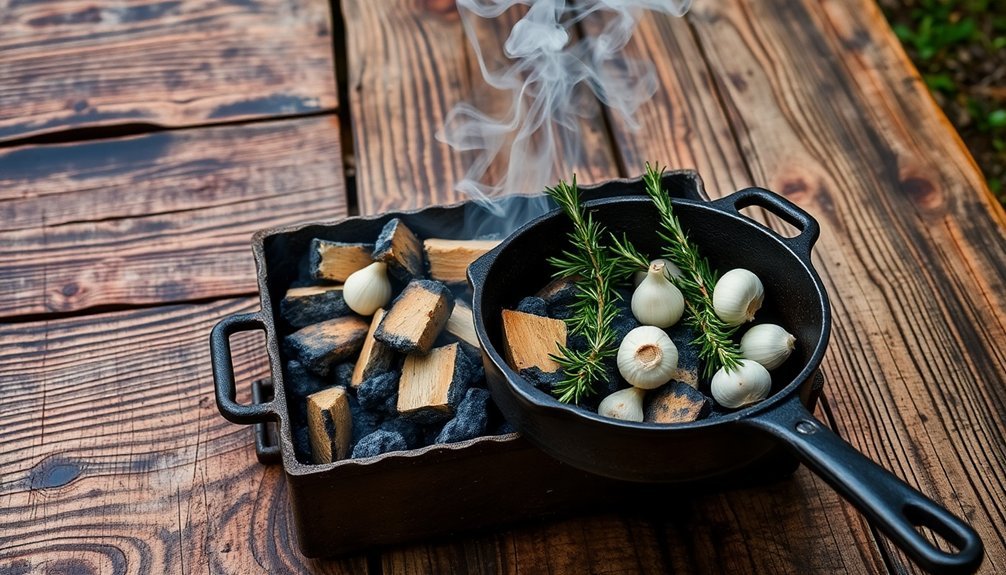
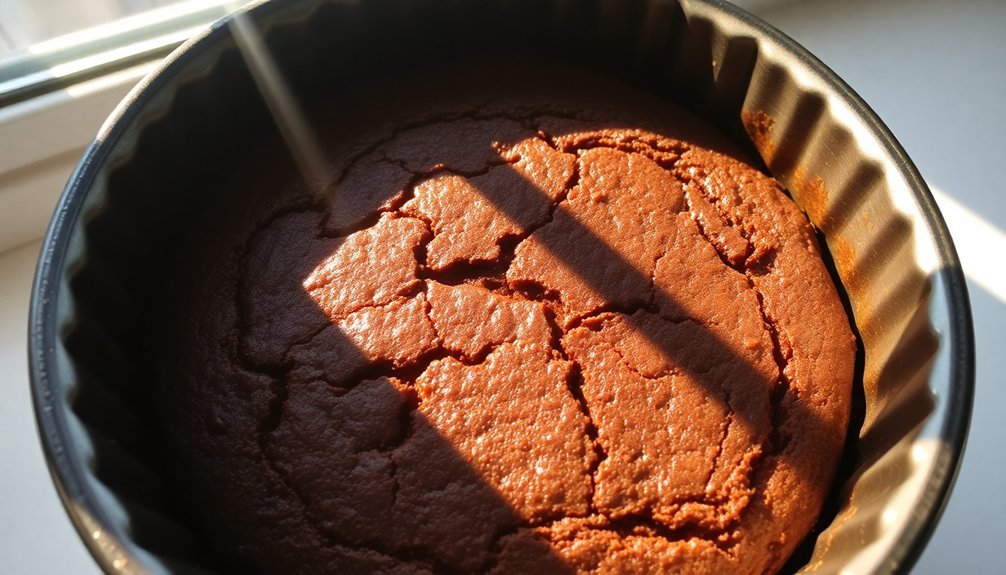
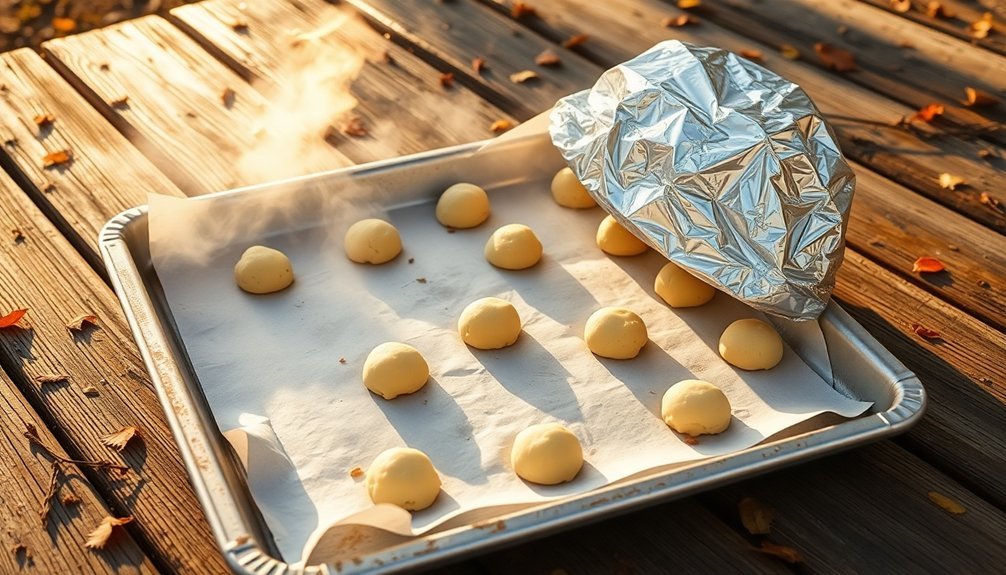
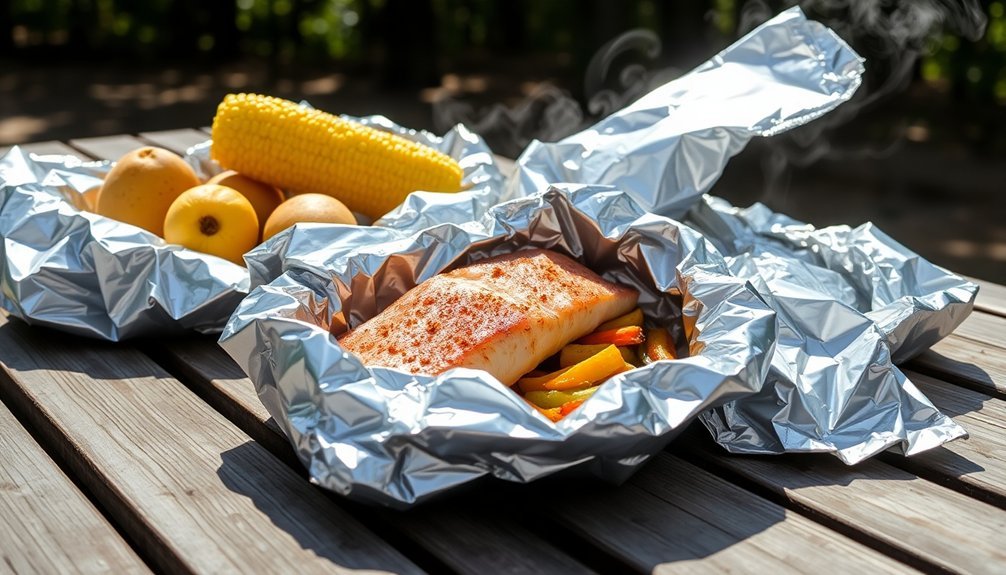
Leave a Reply